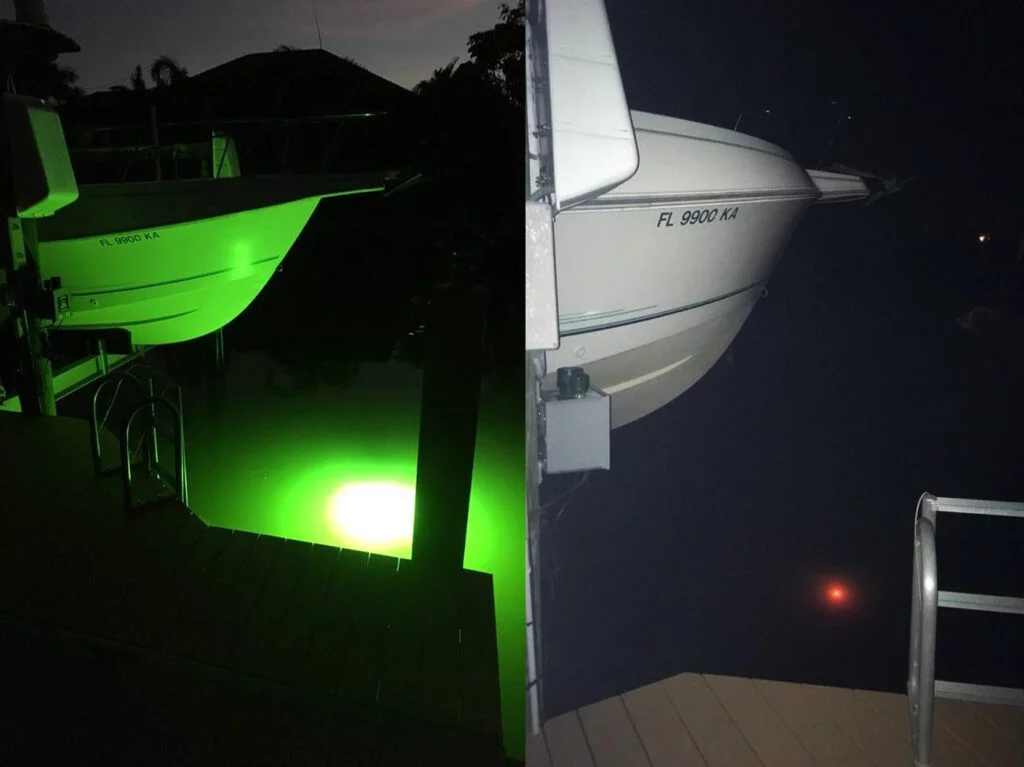Why Your Fish Light Might Look Dim During The Rainy Season In Florida

Florida, the Sunshine State, is renowned for its stunning waterfront properties and pristine coastal landscapes. However, beneath the picturesque facade lies a unique ecological challenge faced by many waterfront neighborhoods with saltwater canals – the murky waters that often plague these idyllic settings. We’ve been in business for almost 20 years, and every year we experience this same phenomenon, with murky water, causing fish lights to look much dimmer than they did just a short time before. In this blog, we’re going to go over how rain can cause murky water.
Let’s be clear about this. Your fish light is looking dim, does that mean it’s going bad? NO. Our fish lights will not dim. If the bulb is bad, the bulb will simply “die” and no longer turn on. If you’re experiencing a dim bulb, that means you have murky water.
The Sunshine State’s Saltwater Canals
Florida boasts an extensive network of saltwater canals, primarily located in coastal cities like Miami, Fort Lauderdale, Punta Gorda, Naples, and the Florida Keys. These canals serve various purposes, from navigation and drainage to waterfront property access and aesthetics. They provide a convenient and picturesque way for residents to enjoy the water (and their fish lights) while granting direct access to the open sea. However, these canals also present unique challenges, particularly during periods of heavy rainfall.
The Rainfall Factor
Florida experiences a tropical climate characterized by distinct wet and dry seasons. During the wet season, which typically spans from June to September, the state receives a substantial amount of rainfall, with occasional heavy downpours and thunderstorms. This increased precipitation can significantly impact the water quality in saltwater canals and, in turn, the quality of life for waterfront residents.
Understanding the Causes
- Runoff Contamination: One of the primary reasons for murky waters in Florida’s saltwater canals is the runoff contamination caused by heavy rainfall. When rainwater washes over paved surfaces, lawns, and roads, it picks up pollutants such as fertilizers, pesticides, oil, and debris. This contaminated runoff eventually makes its way into the canals, leading to water discoloration and reduced clarity.
- Sediment Displacement: Rainfall also disturbs sediment that has settled at the bottom of saltwater canals. This sediment can contain organic matter, silt, and other particulates. When stirred up by rain and strong currents, it muddies the water, further reducing its clarity.
- Nutrient Loading: Rainwater carries essential nutrients, like nitrogen and phosphorus, from various sources into the canals. While these nutrients are crucial for aquatic ecosystems, excessive loading can lead to water quality issues, including algal blooms and murky waters.
The interplay between rain and water quality in Florida’s waterfront neighborhoods with saltwater canals is a complex and dynamic relationship. While the state’s tropical climate provides many benefits, it also presents unique challenges, including the murkiness that often plagues these picturesque canals. Understanding the causes, consequences, and potential solutions is essential for preserving the natural beauty and ecological health of these coastal communities. By implementing effective stormwater management practices, reducing nutrient loading, and monitoring water quality, Florida can work toward ensuring that its saltwater canals remain the sparkling gems of the Sunshine State.




